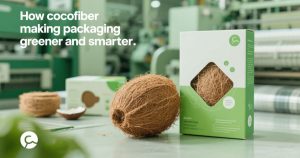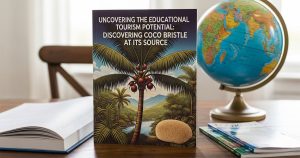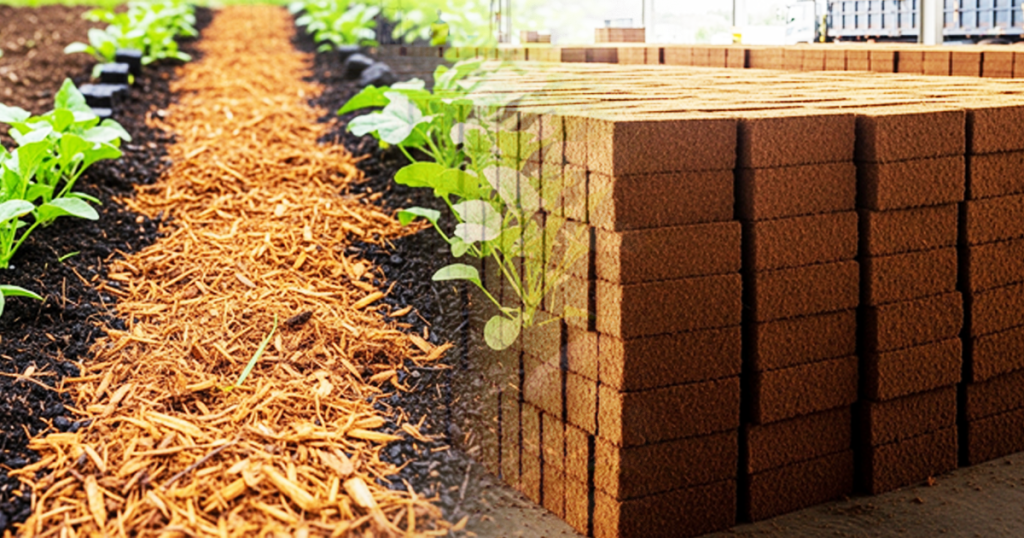Tracing the Environmental Impact of a Natural Fiber
As the global conversation around climate change intensifies, sustainable materials like coco bristle a fiber derived from coconut husks are gaining attention as eco-friendly alternatives to synthetic options.
But how sustainable is coco bristle in reality? As a researcher in the field of coconut by-product utilization, I aim to shed light on the true environmental impact of this natural fiber by tracing its carbon footprint across its entire lifecycle.
Understanding Coco Bristle: A By-Product with Potential
Coco bristle is extracted from the outer layer of the coconut husk, often discarded as agricultural waste. Once separated, these stiff fibers are cleaned, sun-dried, and processed into brushes, brooms, and scrubbing tools.
Unlike plastic bristles that are derived from petroleum, coco bristle originates from a renewable, biodegradable source. This characteristic alone makes it a promising component in sustainable manufacturing.
Life Cycle Assessment (LCA): A Deeper Look into Carbon Emissions
Cultivation and Raw Material Extraction
The carbon footprint of coco bristle begins with coconut farming. Fortunately, coconut trees are perennial and require no replanting for decades, reducing land disturbance. They also act as carbon sinks, absorbing significant amounts of CO₂ during their lifecycle.
Since coco bristle is a by-product, its environmental impact is indirectly shared with the coconut industry’s primary outputs like coconut water, oil, and copra.
Moreover, no additional chemical inputs or fertilizers are required to grow coconuts specifically for bristle production. This significantly reduces emissions associated with intensive agriculture.
Processing and Transportation
After harvesting, the bristles are typically hand-extracted and sun-dried, using minimal energy compared to plastic production, which relies on fossil fuels and energy-intensive polymerization processes.
Small-scale processing units are common, especially in countries like India, Sri Lanka, and Indonesia, where labor-intensive methods dominate. However, transportation poses a larger carbon challenge.
Coco bristle is often shipped internationally to meet demand from eco-conscious markets in Europe and North America. The emissions from container shipping and packaging can increase its overall carbon footprint if not offset through carbon credits or efficient logistics.
End-of-Life: Biodegradability vs. Plastic Waste
One of the most significant advantages of coco bristle is its end-of-life sustainability. Unlike nylon bristles that persist for centuries in landfills, coco bristle decomposes naturally within a few months to a year, depending on environmental conditions.
Moreover, when disposed of properly, coco bristle can be composted or integrated into organic waste systems without the risk of microplastic pollution. This starkly contrasts with synthetic fibers, which fragment into persistent pollutants that harm marine and soil ecosystems.
Hidden Environmental Costs
While coco bristle is largely eco-friendly, hidden costs such as water usage during washing, emissions from wood-fired drying kilns (in traditional settings), and plastic components in the final product (e.g., brush handles) can’t be ignored.
Hybrid products, although partially natural, dilute the overall sustainability unless designed with complete biodegradability in mind.
Final Verdict: Greener, but Not Emission-Free
From a research perspective, coco bristle shows a remarkably lower carbon footprint compared to synthetic alternatives. Its reliance on renewable resources, manual labor, and minimal processing places it among the more sustainable materials in today’s eco-conscious market.
That said, eco-certification and transparency in supply chains are essential moving forward. For coco bristle to stand as a truly green alternative, improvements in processing efficiency, ethical sourcing, and local production-to-consumption cycles are vital.
Recommendations for Conscious Consumers
If you’re looking to reduce your personal carbon footprint, choosing products made from pure, untreated coco bristle with wooden or bamboo handles is advisable. Opt for items made close to home or by brands that support carbon-neutral shipping.
By supporting natural fiber products, you are not only making a sustainable choice but also contributing to the growth of rural economies and the reduction of plastic waste worldwide.







